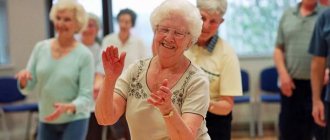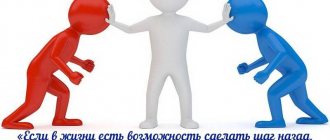We all belong to different social groups and talk about them often. In this article you will learn what social groups are, what characteristics, types and functions they have, as well as why people join groups in general, what causes the emergence of social groups.
To learn how to interact within a social group, find approaches to people, learn how to negotiate and interact better with people, sign up for the online program “Best Communication Techniques”. You will learn and be able to apply in your life 72 of the best communication techniques that we have collected from dozens of books and trainings.
Concept and tasks
In modern psychology, the concept of “social group” is a collection of individuals who have similar features, perform the same type of activity, and perceive themselves as members of a community. The group has 3 main qualities:
- mandatory interaction between participants;
- unity of goals for which the group was created;
- all members have a characteristic unique to this community.
Social psychology of groups studies the process of group formation, its types, structure and influence on the individual. The task of the industry is to assess and forecast the development of the group, identify the characteristics of interaction, and the main criteria. Throughout life, a person simultaneously belongs to several groups and often moves from one to another. This is due to a change in activity or status: for example, a schoolchild becomes a student, a worker becomes a pensioner. In this regard, we can highlight the main task of social psychology of groups - classification according to certain criteria.
Social group definitions
There is no single clear definition of a social group, so we decided to give several at once:
A social group is an association of people who have a common significant social characteristic on which their participation in some activity is based, connected by a system of relations that are regulated by formal or informal social institutions.
A social group is an objectively existing stable community, a collection of individuals interacting in a certain way based on several characteristics, in particular the shared expectations of each group member regarding others.
A social group is a socially organized community of people united by common interests, goals and joint activities.
Taken together, these definitions make it possible to form the most accurate picture of what a social group is. But there are other features that you should be aware of.
History of development
Social psychology began studying groups only at the beginning of the 20th century. Previously, the object of study was the individual, not society. They examined in depth the characteristics of perception, attitudes, and interpersonal interaction, but did not try to evaluate a person as an integral part of formation.
Some psychologists completely denied the existence of groups as objects of study. This approach in social psychology was called personalistic. But in parallel with it, another way of studying developed - sociological. Its proponents argued that one cannot fully understand the motives of a person's behavior if one studies him only as an individual. A group, as an association of people, inevitably influences a person and this cannot be ignored.
The study of group processes has developed more actively in the United States. Under the leadership of K. Levin, research was carried out in the laboratory studying the dynamics, types of leadership, cohesion and other categories that determine the behavior of formations.
Already in the middle of the 20th century, personalistic and sociological psychology joined forces. This happened under the influence of government agencies interested in the emergence of new effective methods of managing industrial and military organizations. Interest in the study of various formations only increased by the end of the 20th century. Nowadays, research methods continue to expand and improve.
Small group structure based on sociometry
When we talk about structure, we mainly mean a small group, where the relationships of people and their statuses are visible, and the leaders and the outcasts are noticeable, one might say, with the naked eye. In social psychology there is a special technique for studying the structure of a small group, which is called “sociometry”.
Sociometric studies are based on the principle of choice: each group member must choose the three most preferred (attractive, reliable, etc.) classmates and three rejected ones. After analyzing the data obtained, the following elements of the group structure can be identified:
- sociometric “stars” - people who received the largest number of elections; they are not necessarily leaders and often do not strive to be, but the "stars" are definitely the most respected in the group;
- preferred - those who received quite a lot of selections, but fewer “stars”;
- “average” – the number of choices is small, but they exist;
- neglected - those who did not receive positive elections;
- outcasts – people who have collected a large number of negative choices;
- microgroups – 3-4 people, connected by mutual elections.
Such research gives a complete picture of the structure of a small group and is very useful for the work of a leader with a team or a teacher with a class.
The system of groups that make up society resembles both an intricate puzzle of relationships and interdependencies, and a clear, ordered structure and hierarchy in which some groups (small) are part of larger ones and themselves include microgroups.
Connections between social groups are not only a consequence of intergroup interaction. They are carried out through individuals who are simultaneously members of different groups. Problems, conflicts, dynamic processes in one group are reflected in many others. For example, a person who is preoccupied with problems with his superiors often takes out his bad mood on his family, friends, members of a sports club, etc. And on the contrary, a good, strong family, positive relationships with friends are the key to a favorable psychological climate in a professional team.
Basic forms and characteristics of communities
There are many types of social formations. To correctly classify groups in psychology, it is necessary to identify the exact criteria by which formations are evaluated.
Based on the nature of interaction, two groups are distinguished:
- primary - relatively stable, with constant close interaction between members, aimed at the socialization of the individual;
- secondary - numerous, with a predominantly formal type of interaction, aimed at achieving a specific goal.
Based on the type of interaction, communities are:
- formal - there is a legal status with clearly defined standards of relationships, the purpose of activity and a fixed hierarchy;
- informal - they appear spontaneously, have no official regulations, and quickly disintegrate.
The communities to which an individual belongs are called ingroups (family, educational or work community, ethnic minority). Communities into which an individual cannot or does not want to be included (another religious community, another family, another age category) are called outgroups.
Based on the number of people and the form of interpersonal connections, small and large groups are distinguished. Small is always small (two people united by a common goal are already considered a group) and has a number of constant characteristics:
- high stability of the composition (new members join rarely, often replacing those who have left);
- participants have similar values and moral standards;
- interpersonal relationships are intense, stable;
- the sense of belonging to a community is developed, arouses approval and pride among the participants;
- clear division of roles, the leader is the unconditional authority.
A large group is distinguished by its large composition and purpose. It is created to achieve a certain result, but there is no interaction between the participants that can ensure rapid achievement of the goal.
The highest form of a group, providing optimal conditions for the development and work of individuals, is a collective. Signs that distinguish a team from other formations: the coincidence of the goals of the individual and society, the unity of principles and value orientations.
Separation according to significant characteristics distinguishes between real and nominal groups. Real formations include those that have socially significant features:
- gender - man or woman;
- ethnicity - European, Asian, Latin American;
- age - child, teenager, adult, elderly;
- profession - teacher, doctor, businessman;
- marital status - married, divorced, single;
- place of residence - city, town, village;
- income level - wealthy, poor, rich.
The nominal ones include formations that are specially allocated for research (passengers entitled to discounted travel, scholarship students, mothers of large families). A person has the right to join such a formation and leave it at any time. For example, disability benefits can be withdrawn, and an unemployed person can get a job.
All groups, regardless of type, have the following mandatory qualities:
- referentiality - acceptance or rejection of values;
- leadership - the degree of influence of one person on another within the framework of formation;
- integrativeness - the degree of merging of participants, unity or disunity;
- microclimate - satisfaction and comfort;
- orientation - the value of attitudes for society.
The presence of these qualities distinguishes a group from a crowd - a spontaneous formation in which people do not have stable connections and the need for communication.
Classification
The characteristics that differentiate groups and how people perceive groups in everyday life constitute intuitive theories about them.
Intuitive typologies converge across four types of groups: proximity, task, social categories, and weak associations. Each group is assigned different characteristics based on certain criteria. People have intuitive theories of groups, and the more general concept of a group can be divided into a typology of groups that differ in their properties, type of interaction, and functions:
- Affinity groups: Long-term, small and with porous boundaries, they have a high degree of interaction and common goals and results, as well as importance and similarity between their members.
- Workgroups: medium-duration, small, with boundaries of moderate permeability, moderate-strong interaction, have common goals with common results, imparting medium-high importance and medium similarity.
- Category groups: long-term, large, low-permeability boundaries, weak interaction, have common goals with common results, resulting in medium importance and medium-low similarity.
Mandatory stages of development and roles of individuals within formations
A group is not formed immediately after people unite. Stages of socio-psychological maturity:
- Conglomerate - strangers find themselves in the same territory for the first time.
- A nominal group - a community receives a name and status.
- Association - a structure is formed, common interests appear.
- Cooperation is active joint interaction, clear designation of roles and structure, formation of intra-group morality.
- Autonomy - in the process of joint activity, the desires of individuals are satisfied.
- A corporation is a closed community that is opposed to others.
- Team - joint activity presupposes integrativeness (collective decision-making).
Each person has his own role in formation, which he performs consciously or simply obeys the imposed model of behavior. There are 3 types of roles:
- Social roles. Necessary to maintain dynamics. Increase cohesion and emotional connections between people. These include: mediator, peacemaker, observer.
- Roles aimed at performing common tasks. They help achieve the goal set before the formation. They assume rational use of resources and minimize efforts. These include: initiator, informant, coordinator, mentor.
- Roles aimed at achieving personal interests. They disorganize participants by using community resources to achieve their own benefit. These include: loner, skeptic, aggressor, cynic.
The manager’s task is to monitor the fulfillment of roles, encourage relationships that are beneficial for the community, and promptly stop the activities of disruptors.
The predominance of public interest over personal development of the team
A good team is made up of people who passionately share common goals, believe that their contributions are valuable, and are motivated to do their best.
A team is strong when its members work well together, so building teams (read: effective teams) is essential to management in any organization. Many projects are successful only when employees interact with each other not only on work issues.
Building effective teams ensures the best results for the company and happy, motivated and dedicated employees for the success of the organization.
In order for a group to become a collective, it must go through certain stages of development:
Preparation is one of the most important aspects of team development. Defining goals clearly and early makes it easier for members to work as a unit. The team must have clearly defined roles and a clear understanding of the tasks that need to be completed to achieve the goals.
The team leader can achieve this goal through new projects or by planning team building activities. He can also strengthen this alliance by praising an individual or team product or process and recognizing achievements.
With well-organized teams, managers can put a company on the path to success.
Conflicts within the team
To understand the problem of disputes within a team and their proper management, it is necessary to keep in mind that they tend to be natural to a certain extent, since each person himself is full of conflicts.
In addition, it should be noted that the work environment is loaded with different behaviors, ways of thinking and working, which leads to the constant emergence of problems.
In this sense, and since this is a very complex issue, every team leader must have at his disposal useful tools to properly manage these conflicts, ranging from knowing the root of the problem, to understanding the attitude of each of the people.
It must be added that not all conflicts have a negative impact on the productivity of the group (company), but they need to be resolved as soon as possible to maintain a good environment, which will depend on the leader's ability to deal with conflict.
In terms of their impact, conflicts are subject to classification, which in any conditions must be resolved quickly and for the common benefit:
Group conflict management will also depend on honesty between those affected. Whatever you feel must be expressed and therefore there is no accumulation of attitudes or feelings.
Another important aspect is the separation of personal and work in conflict, taking into account that most interpersonal problems are influenced by internal or domestic conflicts, and that they are not separated upon entering the work area.
Each person spends most of his life interacting with others in a group context, from birth, through all stages of psychosocial development, and until his death he is part of various formal and informal groups.
Natalia Shakhova
Functions and conditions for normal development
The community has a number of functions that affect each member:
- socializing - assimilation of norms of behavior, education;
- instrumental - carrying out the necessary activities;
- expressive - satisfying the need for acceptance, emotional contacts;
- supportive - moral support.
If the functions are not fulfilled, the community cannot function and quickly disintegrates. Normally, it should develop as a community and provide conditions for the development of individuals.
Interpersonal relationships of individuals within a community
Within a community, different types of relationships are established between individuals:
- official - based on structure, prescribed rules;
- unofficial - arise as a result of personal sympathies;
- business – arise during the performance of official duties;
- rational - based on an objective assessment of other participants;
- emotional – subjective assessment decides everything.
Community management regulates the relationship between the leader and subordinates. With positive dynamics, subordinates recognize the authority of the leader. If negative, they are inclined to protest and create conditions for the emergence of an informal leader.
How to write a term paper on speech therapy
07.09.2010 257544
These guidelines are compiled to help students gain an understanding of the content and structure of coursework in speech therapy.
Logopedia of pedagogical science that studies anomalies of speech development with normal hearing, explores the manifestations, nature and mechanisms of speech disorders, develops the scientific basis for overcoming and preventing them means of special training and education.
The subject of speech therapy as a science is speech disorders and the process of training and education of persons with speech disorders.
The object of study is a person suffering from a speech disorder.
The main task of speech therapy as a science is the study, prevention and elimination of various types of speech disorders.
Coursework in speech therapy is a student's scientific and experimental research. This type of educational activity, provided for by the educational and professional program and curriculum, contributes to the acquisition of skills in working with literature, analyzing and summarizing literary sources in order to determine the range of insufficiently studied problems, determining the content and methods of experimental research, processing skills and qualitative analysis of the results obtained. The need to complete coursework in speech therapy is due to the updating of knowledge concerning the content, organization, principles, methods and techniques of speech therapy work.
As a rule, during their studies, students must write two term papers - theoretical and practical.
The first course work should be devoted to the analysis and synthesis of general and specialized literature on the chosen topic. Based on this analysis, it is necessary to justify and develop a method of ascertaining (diagnostic) experiment.
In the second course work, it is necessary to provide an analysis of the results obtained during the ascertaining experiment, as well as determine the directions and content of speech therapy work, and select adequate methods and techniques of correction.
So, let’s present the general requirements for the content and design of coursework in speech therapy.
The initial and most important stage of working on a course project is the choice of a topic, which is either proposed by the supervisor or chosen by the student independently from a list of topics that are consistent with the areas of scientific research of the department.
Each topic can be modified, considered in different aspects, but taking into account a theoretical and practical approach. Having chosen a topic, the student needs to think through in detail its specific content, areas of work, practical material, etc., which should be reflected both in the formulation of the topic and in the further construction of the study. It should be recalled that the chosen topic may not only have a purely theoretical orientation, for example: “Dysarthria. Characteristics of the defect”, “Classification of dysgraphia”, but also take into account the practical significance of the problem under consideration, for example: “Speech therapy work on speech correction for dysarthria”. It should also be taken into account that when formulating a topic, excessive detail should be avoided, for example: “Formation of prosodic components of speech in preschoolers of the sixth year of life attending a preschool institution for children with severe speech impairments.”
The course work includes such mandatory parts as: introduction, three chapters, conclusion, bibliography and appendix.
The text of the term paper begins with the title page . An example of its design can be seen here.
Then the content of the work is given, in which the names of chapters, paragraphs, and sections are formulated in strict accordance with the content of the thesis. An example of its design can be seen here.
In the text, each subsequent chapter and paragraph begins on a new page. At the end of each chapter, the materials are summarized and conclusions are formulated.
The introduction reveals the relevance of the problem under consideration in general and the topic being studied in particular; the problem, subject, object, and purpose of the study are defined. In accordance with the goal and hypothesis, objectives and a set of research methods aimed at achieving the objectives must be defined.
The relevance of the topic lies in reflecting the current level of pedagogical science and practice, meeting the requirements of novelty and usefulness.
When defining the research problem, it is important to indicate what practical tasks it will help to implement in training and educating people with speech pathology.
The object of research is understood as certain aspects of pedagogical reality, perceived through a system of theoretical and practical knowledge. The ultimate goal of any research is to improve this object.
The subject of research is some part, property, element of an object, i.e. the subject of research always indicates a specific aspect of the object that is to be studied and about which the researcher wants to gain new knowledge. An object is a part of an object.
You can give an example of the formulation of the object, subject and problem of research:
– The object of the study is the speech activity of preschool children with phonetic-phonemic speech disorders.
– The subject of the study is the features of intonation speech of children with phonetic-phonemic speech disorders.
– The research problem is to determine effective directions for speech therapy work on the formation of intonation expressiveness of speech in the system of correctional intervention.
The purpose of the study contributes to the specification of the object being studied. The goal of any research is to solve a specific problem. The goal is specified in tasks taking into account the subject of research.
The research objectives are formulated in a certain sequence, which determines the logic of the research. The research objectives are set on the basis of a theoretical analysis of the problem and an assessment of the state of its solution in practice.
The first chapter is an analysis of literary sources, which examines the state of this problem in historical and modern aspects, and presents the most important theoretical principles that formed the basis of the study.
When writing the first chapter, you should pay attention to the fact that the text of the course work must be written in a scientific style. When presenting scientific material, it is necessary to comply with the following requirements:
– Specificity – a review of only those sources that are necessary to disclose only a given topic or solve only a given problem;
– Clarity – which is characterized by semantic coherence and integrity of individual parts of the text;
– Logicality – which provides for a certain structure of presentation of the material;
– Reasoning – evidence of thoughts (why this and not otherwise);
– Precision of wording, excluding ambiguous interpretation of the authors’ statements.
A literary review of the state of the problem being studied should not be reduced to a consistent presentation of literary sources. It should present a generalized description of the literature: highlight the main directions (currents, concepts, points of view), analyze in detail and evaluate the most fundamental works of representatives of these directions.
When writing a work, the student must correctly use literary materials, make references to the authors and sources from which the results of scientific research are borrowed. Failure to provide required references will reduce your coursework grade.
As a rule, in coursework on speech therapy, references to literary sources are formatted as follows: the number of the cited source in the general list of references is placed in square brackets. For example: General speech underdevelopment is a speech pathology in which there is a persistent lag in the formation of all components of the language system: phonetics, vocabulary and grammar [17].
When using quotations, in square brackets, in addition to indicating the source number, the page number from which this excerpt is taken is indicated, for example: Speech rhythm is based on a physiological and intellectual basis, since, firstly, it is directly related to the rhythm of breathing. Secondly, being an element that performs a communicative function, “correlates with meaning, i.e. controlled intellectually” [23, P.40].
However, course work should not be of a purely abstract nature, so you should not abuse the unreasonable abundance of citations. Quoting should be logically justified, convincing and used only when really necessary.
In the second chapter , devoted to experimental research, the organization should be described and the program of the ascertaining experiment should be presented. The survey methodology, as a rule, consists of a description of several series of tasks, with detailed instructions, visual and lexical material, the procedure for completing tasks by experiment participants, and scoring criteria. This chapter also provides a qualitative and quantitative analysis of the results obtained.
When analyzing the results of an experiment, it is necessary to use a scoring system. Examples of various criteria for quantitative and qualitative assessment are presented in the following works:
– Glukhov V.P. Formation of coherent speech in preschool children with general speech underdevelopment. - M.: Arkti, 2002. - 144 p.
– Fotekova T.A. Test methodology for diagnosing oral speech of primary schoolchildren. - M.: Arkti, 2000. - 56 p.
– Levchenko I.Yu. Pathopsychology: Theory and practice. - M.: Academy, 2000. - 232 p.
In order to visually present the results obtained during the experimental study, it is recommended to use tables, graphs, diagrams, etc. Histograms can be used in a variety of ways - columnar, cylindrical, planar, volumetric, etc. An example of the design of tables, figures, and histograms can be found here.
The third chapter provides a rationale for the proposed methods and techniques and reveals the content of the main stages of correctional work.
The conclusion contains a summary of the material presented and the main conclusions formulated by the author.
The bibliography must contain at least 25 sources. The list includes bibliographic information about the sources used in preparing the work. An example of its design can be seen here.
In the application you can present bulky tables or illustrations, examination protocols, observation records, products of activity (drawings, written works of children), notes from speech therapy classes, etc.
The volume of one course work must be at least 30 pages of typewritten text.
In general, coursework in speech therapy is the basis for a future thesis, in which the study of the begun problem can be continued, but from the standpoint of a different approach or a comparative analysis of the disorders being studied in different age categories of people with different types of speech disorders.
The content and format of theses in speech therapy can be found here.
Literature:
1. How to write a term paper on speech therapy: Methodological recommendations. Educational and methodological manual / Comp. Artemova E.E., Tishina L.A. / Ed. Orlova O.S. – M.: MGOPU, 2008. – 35 p.
2. Research work of students in the system of higher professional pedagogical education (specialty 031800 - Speech therapy). Methodological recommendations for completing the thesis / Compiled by. L.V. Lopatina, V.I. Lipakova, G.G. Golubeva. - St. Petersburg: Publishing house of the Russian State Pedagogical University named after. A. I. Herzen, 2002. - 140 p.










